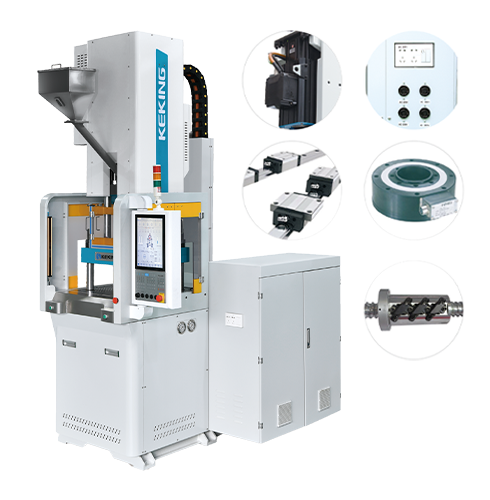When using the Type-C vertical injection molding machine for production, the selection and replacement of molds are the key links to ensure product quality and production efficiency. Reasonable selection of molds and mastery of the correct replacement methods can make production work smoother and more effective.
When choosing the Type-C vertical injection molding machine mold, the design requirements of the product should be clarified first. Different types of Type-C products have differences in size, shape and structure. For example, when producing Type-C data cable plug molds, it is necessary to accurately match the size specifications of the plugs to ensure that the plugs formed by the molds can be adapted to various devices. At the same time, the surface requirements of the product should not be ignored. If the product has a high demand for surface smoothness, the surface of the mold needs to be finely treated to reduce the surface defects of the product after molding.

The material selection of the mold is also of vital importance. Common mold materials include steel of different grades, and the hardness, wear resistance and corrosion resistance of different steels vary. If the production batch is large, in order to extend the service life of the mold, steel molds with higher hardness and better wear resistance should be selected. For small-batch production, steel molds with lower costs and performance that can meet basic requirements can be appropriately selected. In addition, the thermal stability of the mold material should also be taken into account to ensure that the mold does not deform due to temperature changes during the injection molding process, which would affect the product quality.
The structural design of the mold also requires attention. A reasonable mold structure can increase the success rate of injection molding and reduce the defective rate. For instance, the position and size design of the gate can affect the flow and filling effect of the plastic melt. An appropriate gate design can prevent problems such as material shortage and bubbles in the product. The design of the ejection mechanism is also crucial. It is related to whether the product can be smoothly extruded from the mold. If the ejection mechanism is not designed reasonably, it may lead to product damage.
When it is necessary to change the mold, certain operation procedures should be followed. First of all, the power supply and air source of the injection molding machine should be turned off to ensure the safety of the replacement process. Then, open the template of the injection molding machine to the appropriate position, use a special tool to loosen the fixing bolts on the mold, and carefully remove the old mold from the injection molding machine. Before installing the new mold, carefully check whether all the components of the mold are in good condition, clean the debris on the mold installation surface and the injection molding machine template, and ensure that the installation surface is flat and clean. Next, place the new mold steadily on the injection molding machine template, align it with the installation holes, and fix the mold firmly with bolts. After the fixation is completed, the mold should be debugged to check whether the opening and closing of the mold is smooth and whether the operation of each component is normal, to ensure that the mold can be put into production normally.





